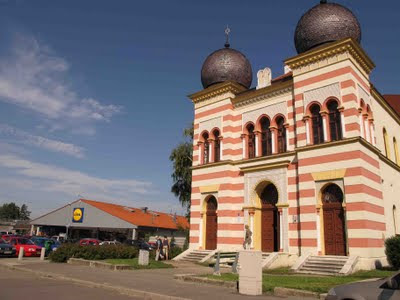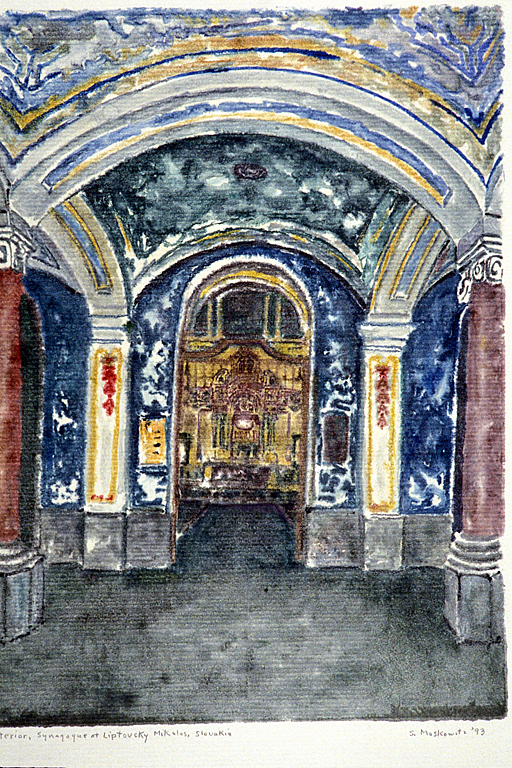 |
| Banner during the Festival in 2009. Photo (c) Ruth Ellen Gruber |
By Ruth Ellen Gruber
Deutsche Welle runs a report about hard times, financial and other, hitting the annual Jewish Summer Festival in Budapest.
See full story by clicking HERE
Hungary's Jewish Summer Festival takes place this year in the shadow of economic gloom and extremism plaguing this EU nation of some 10 million people.
Under the current center-right government, the festival's budget was slashed and the city of Budapest reduced its financial support by 70 percent to five million forints (about 18,500 euros or $26,700).
"Despite the economic difficulties, we tried to organize the festival," explained Gusztav Zoltai, executive director of the Federation of Jewish Communities in Hungary. He pledged the program would be so good "that the public does not notice we have financial problems."
[....]
Budapest Klezmer Band ... member Ferenc Javori hopes music and culture will ease tensions in Hungary's troubled society.
That seems necessary since Hungary has been rocked by anti-Semitism. Several festival posters were painted over with swastikas and slogans such as "Jews go home," for example.
Earlier in August, the Sziget Music Festival saw scores of neo-Nazi and far-right activists trying to storm the Budapest event, which they viewed as organized by Jews and anti-Hungarian investors.
Police detained several demonstrators, including a prominent parliamentarian of the rightist Movement for a Better Hungary, or Jobbik. Earlier, thousands of neo-Nazis from across Europe gathered at their own Magyar Sziget, or Hungarian Island festival in the village of Veroce, just north of Hungary's capital.
Among those performing there was far-right Swedish singer Saga, singing for neo-Nazi and other extremists, who were waving flags and giving the Hitler salute.








































